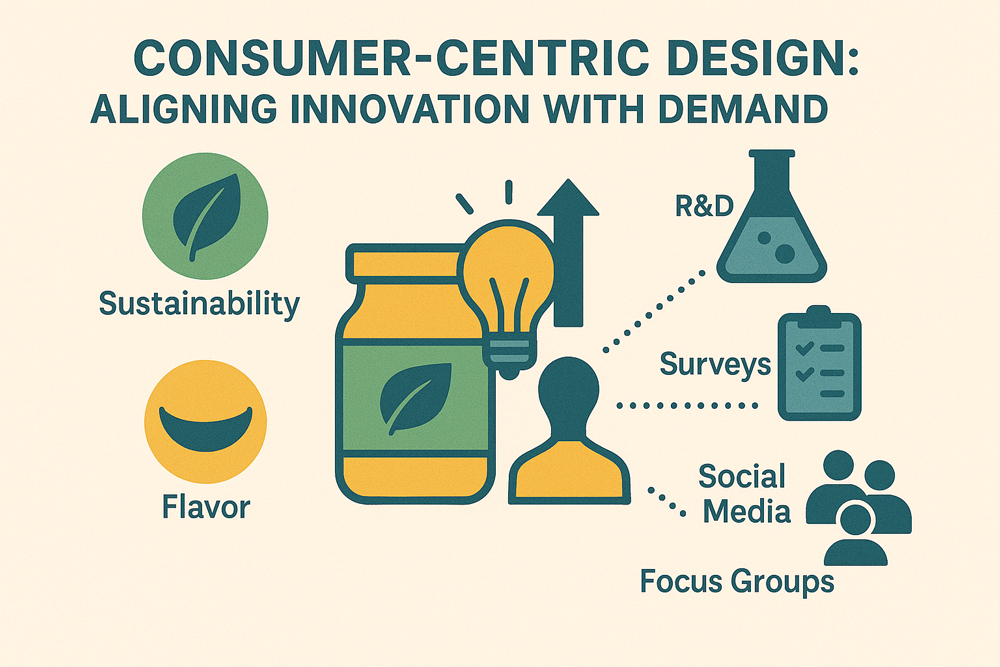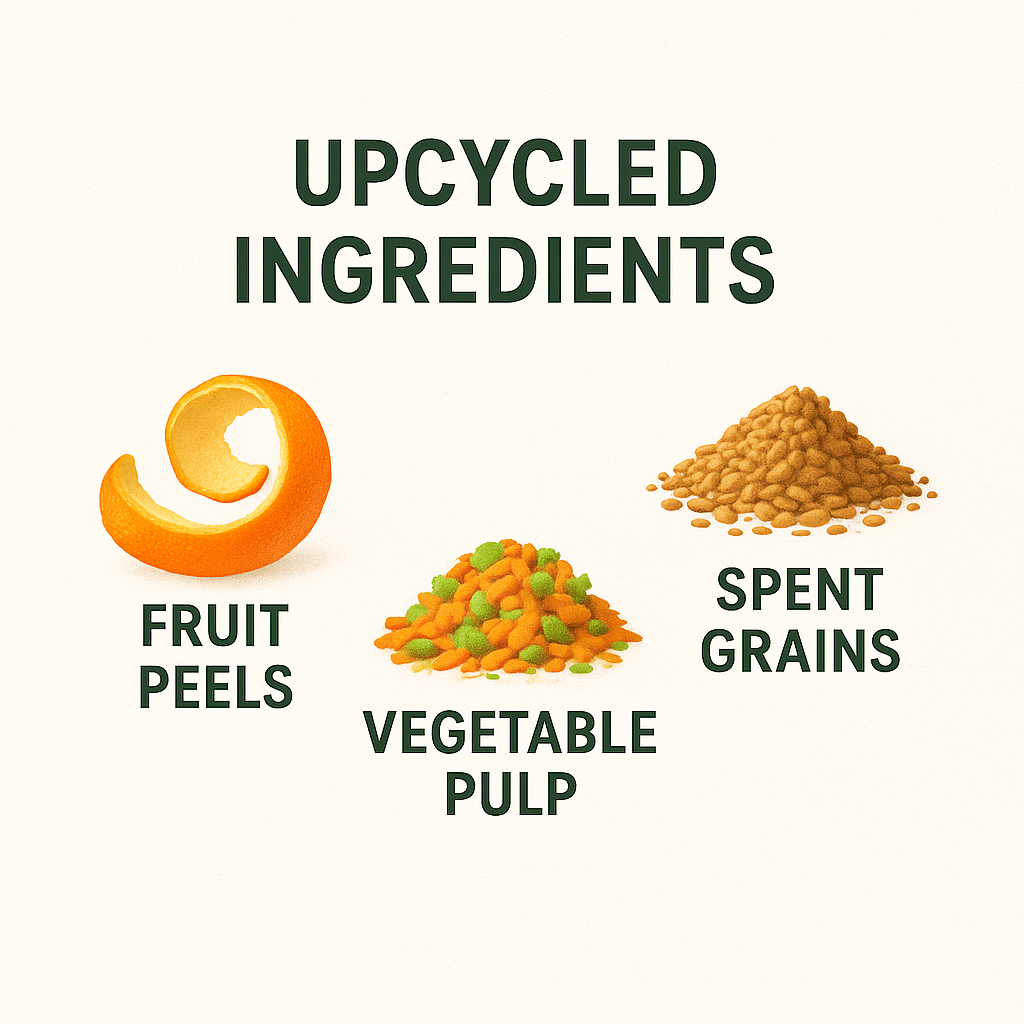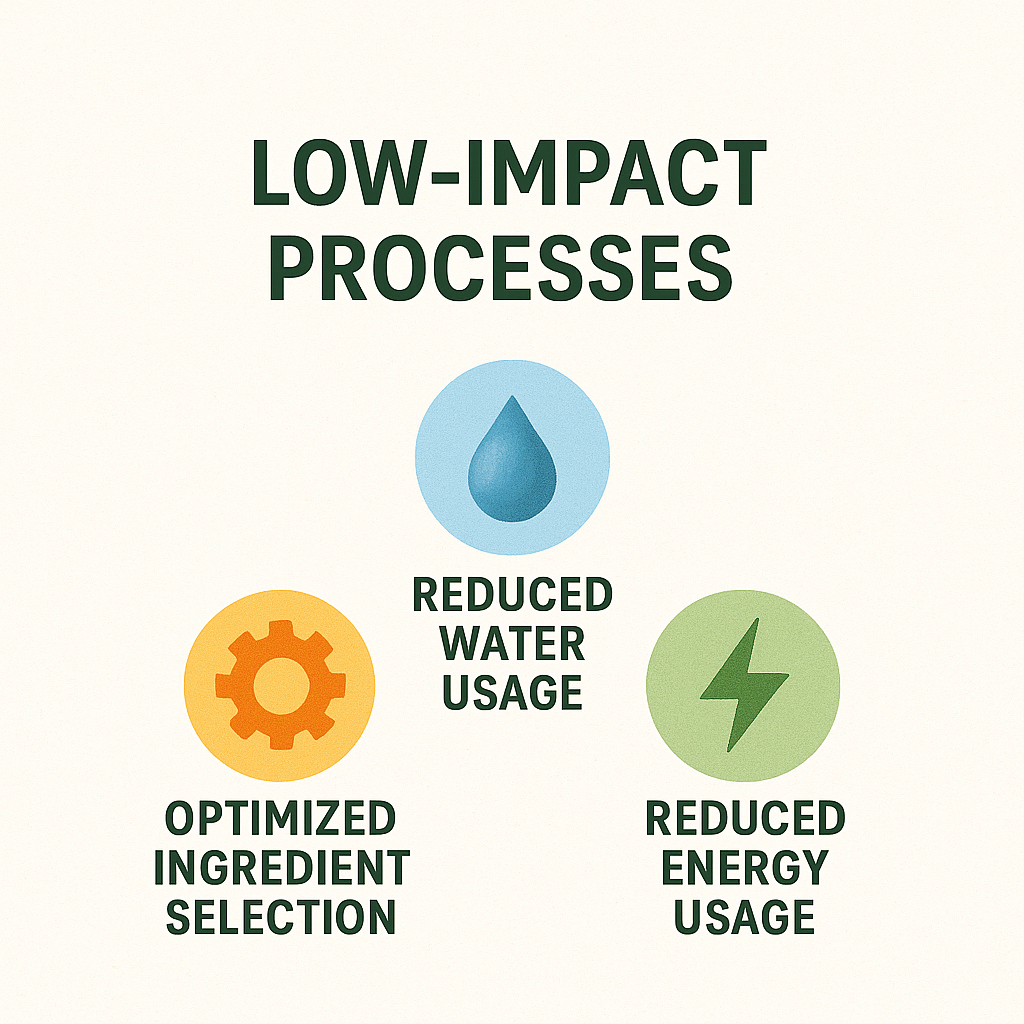
From Concept to Climate Impact: Greener Food Begins at Product Design
According to United Nations projections, the global population, currently around 8.2 billion, is expected to rise to 8.6 billion by 2030 and reach 9.8 billion by 2050. These numbers intensify the demand for food, placing significant pressure on food manufacturers and retailers to scale up their operations. Simultaneously, these businesses encounter increasing expectations to operate more sustainably. This shift is fuelled by consumers who are seeking healthier and ethically sourced products, as well as by governments imposing stricter regulations on natural resource usage. In response, many leading companies in the food sector have launched sustainability-focused initiatives, ranging from environmentally conscious product development to efforts aimed at reducing the ecological footprint of their operations. From regenerative farming to low-emission logistics, the sector is evolving across different value chain stages.
Reframing Sustainability: It Starts with Product Design
Over the past decade, key areas across the food supply chain—such as emissions control, adoption of renewable energy in manufacturing, eco-conscious packaging, and green logistics—have witnessed substantial progress. These initiatives are now approaching a level of maturity, supported by clearer standards, better infrastructure, and greater stakeholder alignment.
However, a critical and transformative opportunity lies further upstream—at the product design stage itself. Here, sustainability can be embedded at the source, influencing every downstream decision and impact point. Whether it’s choosing sustainable ingredients, engineering low-impact processing methods, or reimagining product formats for minimal environmental cost, early-stage design thinking can determine the sustainability profile of a food product from the outset.
Unlike retrofitting existing systems, designing for sustainability from day one allows for greater agility, innovation, and holistic environmental planning. It turns sustainability from a compliance-driven activity into a core innovation driver and places R&D at the heart of long-term ecological resilience.
The R&D Lens: Sustainability in Food Design
While most current sustainability initiatives in the industry still focus on controlling food wastage, extending shelf life, and reducing pollution from packaging materials, incorporating sustainability objectives during the product design phase is becoming increasingly crucial to establish sustainable food systems for future generations. This proactive approach gives companies a strategic advantage in building resilient product pipelines aligning with regulatory evolution and consumer values.
- Consumer-Centric Design: Aligning Innovation with Demand
 Modern food R&D strategies prioritize sustainability alongside flavor and functionality. Companies that successfully innovate through R&D can predict consumer demands, align with trends, and gain a competitive edge in the market. This approach includes integrating real-time consumer feedback through surveys, social media insights, and focus groups to ensure that new products align with evolving sustainability expectations and taste preferences. Although this is a fundamental principle, the successful execution of this objective yields benefits for the business and all the resources that go into product manufacturing and selling.
Modern food R&D strategies prioritize sustainability alongside flavor and functionality. Companies that successfully innovate through R&D can predict consumer demands, align with trends, and gain a competitive edge in the market. This approach includes integrating real-time consumer feedback through surveys, social media insights, and focus groups to ensure that new products align with evolving sustainability expectations and taste preferences. Although this is a fundamental principle, the successful execution of this objective yields benefits for the business and all the resources that go into product manufacturing and selling.
- Broadening the Crop Palette: Ingredient Diversification for Resilience
 A critical R&D strategy for building a sustainable food system is addressing the ongoing homogenization of our food supply. Although there are around 300,000 edible plants, just four—wheat, rice, corn, and potatoes—account for 60% of global calories. This narrow reliance increases vulnerability to climate disruptions, pests, and diseases, while contributing to biodiversity loss.
A critical R&D strategy for building a sustainable food system is addressing the ongoing homogenization of our food supply. Although there are around 300,000 edible plants, just four—wheat, rice, corn, and potatoes—account for 60% of global calories. This narrow reliance increases vulnerability to climate disruptions, pests, and diseases, while contributing to biodiversity loss.
Companies must continue expanding their ingredient portfolios beyond traditional staples, tapping into resilient, resource-efficient crops like millets, legumes, and amaranth. These crops offer environmental benefits and meet growing consumer demand for sustainable and nutritious foods. Sustained focus on ingredient diversification will be key to strengthening supply chain resilience, driving product innovation, and leading the transition toward a more sustainable food future. Millets have increasingly become mainstream ingredients in India, making their way into various food categories, including breakfast cereals, energy bars, and ready-to-eat meals. As a result, they contribute to healthier diets and play a pivotal role in the country’s move towards more sustainable food systems. Their resilience to climate change and minimal water usage make millets a key crop in diversifying ingredient portfolios, offering environmental and nutritional benefits.
- Upcycled Ingredients: Driving Circularity through R&D
 As sustainability becomes central to food innovation, R&D teams increasingly incorporate upcycled ingredients, such as fruit peels, vegetable pulp, and spent grains, into product development to enhance circularity and reduce food waste. This approach minimizes environmental impact and unlocks new nutritional and functional benefits, helping companies meet growing consumer demand for eco-friendly, resource-efficient products. Upcycling transforms byproducts into high-value ingredients, offering R&D opportunities to innovate across snacks, supplements, and packaged foods while building strong sustainability narratives.
As sustainability becomes central to food innovation, R&D teams increasingly incorporate upcycled ingredients, such as fruit peels, vegetable pulp, and spent grains, into product development to enhance circularity and reduce food waste. This approach minimizes environmental impact and unlocks new nutritional and functional benefits, helping companies meet growing consumer demand for eco-friendly, resource-efficient products. Upcycling transforms byproducts into high-value ingredients, offering R&D opportunities to innovate across snacks, supplements, and packaged foods while building strong sustainability narratives.
Several companies are leading the way in upcycled innovation. Globally, ReGrained converts spent brewing grains into high-fiber “SuperGrain+” flour; Outcast Foods transforms surplus produce into nutrient-rich powders; and Pulp Pantry uses cold-pressed juice pulp to create fiber-rich snacks. Globally, Nestlé’s Nescafé Nativ Cascara and Buxton Plant+Water exemplified how R&D can convert food processing byproducts into value-added beverages. Nescafé Nativ Cascara repurposes cascara—typically discarded coffee berry husks—into a carbonated botanical drink, while Buxton Plant+Water uses extracts derived from the coffee decaffeination process. These innovations demonstrate the potential of upcycling in beverages. However, such applications are still emerging in India, where upcycled food remains nascent and largely confined to limited initiatives in restaurants experimenting with ingredients like vegetable peels and fish skins. Greater awareness and scaling are needed to drive circularity in the Indian context.
- Being Efficient, Responsible with Low-Impact Processes

As part of sustainable product innovation, R&D teams are increasingly focusing on low-impact formulations and processing technologies that emphasize lower environmental impact. Low-impact formulations aim to reduce water and energy usage during production by optimizing ingredient selection and processing methods. By integrating these approaches, companies can create products that appeal to sustainability-conscious consumers and lower their environmental footprint, strengthening their contribution to a more resilient and responsible food system.
- Going Local: Regional Sourcing and Sustainable Substitution
 Another critical dimension of sustainable product design is local sourcing and the strategic use of ingredient alternatives to reduce environmental dependency, strengthen regional value chains, and mitigate supply risk. By designing products aligned with local agricultural ecosystems, companies can significantly reduce transportation emissions, ensure fresher inputs, and promote economic development in farming communities.
Another critical dimension of sustainable product design is local sourcing and the strategic use of ingredient alternatives to reduce environmental dependency, strengthen regional value chains, and mitigate supply risk. By designing products aligned with local agricultural ecosystems, companies can significantly reduce transportation emissions, ensure fresher inputs, and promote economic development in farming communities.
A compelling example comes from the chocolate industry. With the global cocoa supply under stress, especially in major African producing regions due to climate change and deforestation, Mondelez India is working to localize its supply by cultivating cocoa in India. The company has partnered with institutions like the Central Plantation Crops Research Institute (CPCRI) and Kerala Agricultural University to make high-quality seedlings available and develop appropriate agronomic practices. Traditionally grown as an intercrop with coconut in South India, Cocoa is now also being cultivated as a monocrop in parts of Andhra Pradesh. This initiative enhances local self-reliance and offers Mondelez a more resilient and traceable cocoa supply chain.
Complementing local sourcing, ingredient substitution strategies are also playing a larger role in product sustainability. In the same chocolate segment, companies are increasingly exploring cocoa butter alternatives—such as cocoa butter substitutes (CBS), equivalents (CBE), and replacers (CBR)—which can be derived from regionally available oils like shea, mango kernel, kokum, or sal. Along with the positive cost implications, these alternatives often require fewer intensive inputs, are more stable in certain climates, and can lower the carbon footprint of importing cocoa butter from far-flung geographies.
When thoughtfully integrated into product design, local sourcing and sustainable alternatives enhance a product’s environmental profile, reduce vulnerability to global supply disruptions, and contribute to regional agricultural diversification. When aligned with sustainability goals, these practices exemplify how ingredient strategy can deliver multi-layered benefits across environmental, social, and economic dimensions.
- Form Follows Footprint: Designing Smarter Product Formats
 Beyond ingredients and sourcing, the physical format of food and beverage products plays a pivotal role in determining their environmental footprint. Designing with sustainability in mind means evaluating how products are delivered, stored, transported, and consumed—and making choices that minimize resource use, packaging waste, and emissions.
Beyond ingredients and sourcing, the physical format of food and beverage products plays a pivotal role in determining their environmental footprint. Designing with sustainability in mind means evaluating how products are delivered, stored, transported, and consumed—and making choices that minimize resource use, packaging waste, and emissions.
One powerful approach is reducing product water weight. For example, brands can shift to concentrated or ready-to-mix formats such as powders or effervescent tablets, instead of shipping ready-to-drink beverages in plastic bottles. These alternatives are lightweight, shelf-stable, require minimal packaging, and dramatically reduce shipping volumes and carbon intensity.
The beverage industry is seeing tangible movement in this direction. While carbonated soft drinks (CSDs) and energy drinks have seen progress through the adoption of recyclable metal cans, categories like sports drinks still rely heavily, nearly 90% globally, on single-use plastic bottles. However, this is starting to change. Companies are innovating toward dry formats like electrolyte powders, sticks, and effervescent tablets, which reduce plastic use and offer greater convenience for consumers who can personalize serving sizes and use them on the go.
Conclusion: Rethinking the Starting Line
True transformation in the food industry’s sustainability journey will hinge on end-of-pipe solutions and rethinking the starting line—product design. With consumers, regulators, and investors pushing for transparency and responsibility, companies that embed sustainability into the earliest design decisions will shape the next wave of innovation. From ingredients and formats to processing methods and formulation philosophy, design-first thinking enables companies to move beyond incremental fixes and deliver meaningful, measurable impact across the value chain.
Authors

Connect with Authors at: E-mail foodbiz@sathguru.com
 Grow Beyond
Grow Beyond 

